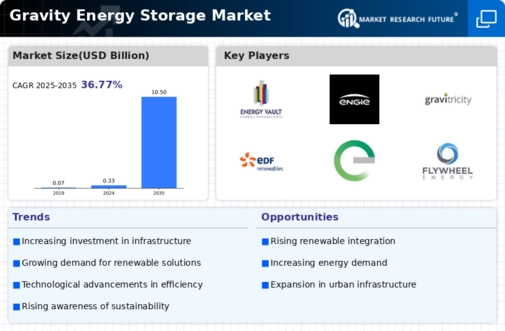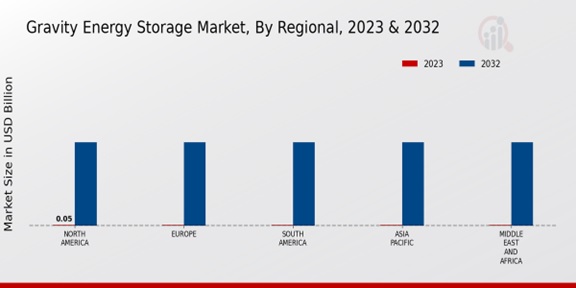The Gravity Energy Storage Market is projected to reach USD 4.1 billion by 2032, exhibiting a CAGR of 36.77% from 2024 to 2032. This growth is attributed to the increasing need for reliable and cost-effective energy storage solutions coupled with supportive government policies and incentives. Key market players are focusing on developing advanced technologies and expanding their geographical presence to cater to the growing demand. Recent news developments include:- In 2023, Gravitricity announced a partnership with Tata Power to deploy a 4MWh gravity energy storage system in India.
This project marks a significant milestone in the commercialization of gravity energy storage technology.- In 2024, Energy Vault secured USD 100 million in funding to accelerate the deployment of its gravity energy storage systems globally. The company plans to install 100GWh of storage capacity by 2025. These developments highlight the growing interest and investment in gravity energy storage as a promising solution for grid-scale energy storage applications.
In September 2023, Energy Vault and GESSOL signed a licensing and royalty agreement while expanding into Southern Africa. This expansion consists of deploying the EVx gravity energy storage system which would help solve renewable energy and decarbonization targets.
By September 2023, Energy Vault had connected five more EVX deployments, which resulted in a total of 3.3 GWh, which saw the commissioning of the first Evx system in Rudong. These initiatives are at the heart of the pursuance to facilitate the establishment of a commercial grid-scale gravity energy storage.
As part of its ambitions to establish a renewable energy grid balancing capability, gravictricity, along with Panitek Power, launched a pilot gravity energy storage system in India in November 2022, partnering with the UK’s Ayrton fund. This project aims to locate sites for the renewable energy battery grid balancing.
Moreover, over the life cycle of this project, multiple sites for renewable energy battery grid balancing in India will also be identified. Energy Vault entered into a partnership with a construction firm from Switzerland to develop modular gravity-based storage systems for smaller-scale renewable energy project-reliant systems.
In Scotland, Gravitricity delivered its maiden commercial project successfully in May 2023, which has proven there is potential to achieve scale of operations and make operational gravity-based energy storage units efficient.
Energy Vault now signed a contract with Enel Green Power on July 2023 to deploy its pilot system with the target of stabilising the renewable grid in Italy using its EVX system.
In February 2024, Gravitricity entered into an agreement with InfraCo Africa to jointly develop a gravity-based energy storage project in South Africa. This project seeks to enhance energy access as well as clean energy transitions in neglected regions.
In March 2024, Gravity Power partnered with ABB to work on scalable and cost-effective gravity energy storage systems. Their joint efforts aim at industrial sectors in need of reliable and clean power supply systems.














